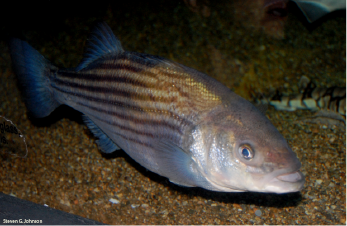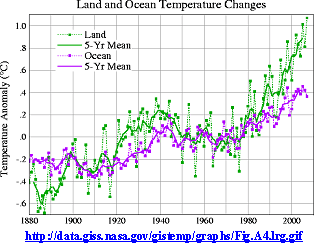 Any aspect of the physical environment that affects living organisms is called a “physical factor.” Aquatic organisms are greatly affected by various physical factors such as temperature, salinity, dissolved oxygen, depth, and several others. In the open and coastal ocean, temperature can be a strong determinate of animal distribution. This web-based activity uses ocean temperatures to determine the distribution of marine organisms. In this exercise, you will investigate the influence of ocean temperature on marine organism distribution.
Any aspect of the physical environment that affects living organisms is called a “physical factor.” Aquatic organisms are greatly affected by various physical factors such as temperature, salinity, dissolved oxygen, depth, and several others. In the open and coastal ocean, temperature can be a strong determinate of animal distribution. This web-based activity uses ocean temperatures to determine the distribution of marine organisms. In this exercise, you will investigate the influence of ocean temperature on marine organism distribution.
You can either use the instructions, web links, and questions provided on this web page or download the same information in the Student Worksheet word document from the Lesson Resources section.
Materials
- Computers with internet access
- Student Worksheet (optional)
Procedure
1. Go to the National Data Buoy Center to locate offshore water temperatures at the following locations:
Maine
New York
Virginia
South Carolina
Florida (Miami)
Chesapeake Bay
2. The table below describes the optimal temperature ranges for these marine organisms. Using the data from the above table, determine the potential location of the organism.
| Organism Name | Optimal Temperature (°C) | Potential Location |
| White Perch | 10-30 | ______________________ |
| Silverside | 3-31 | ______________________ |
| Striped Bass | 18-23 | ______________________ |
| American Lobster | 8-14 | ______________________ |
| Florida (spiny) Lobster | 22-26 | ______________________ |
| Eelgrass | 0-25 | ______________________ |
| Widgeon Grass | 5-30 | ______________________ |
3. Answer the following questions:
- Which organisms would you expect to find in Chesapeake Bay at this time?
- Which organisms would you expect to find in Maine at this time?
- List the organisms that might live anywhere from Maine to Florida to California?
- Explain how these organisms can live in many different locations.
Application to Climate Change
Study the graph to the right (source: NASA), which shows the changes (anomaly is the temperature above or below the average temperature) in land and ocean temperature from 1880 to present. Use the graph to determine the rate of change of ocean temperature over the past 50 years.
Rate of ocean temperature change:____________________
If this rate of change remains the same, predict the change in temperature in the next 50 years and 100 years.
Temperature change in 50 years:______________________
Temperature change in 100 years:_____________________
Answer the following questions:
- Describe how the rise in ocean temperature will affect the habitat for marine organisms.
- Explain how these changes in ocean temperatures will affect our marine resources.